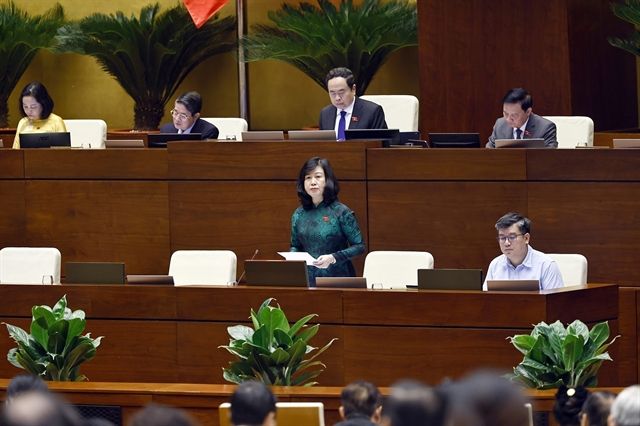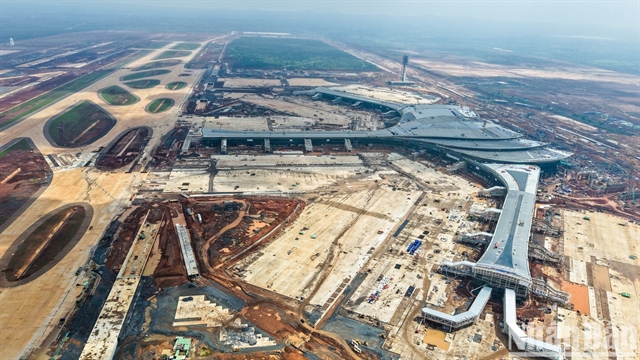 Politics & Law
Politics & Law

 |
| Assoc. Prof. Phan Lê Thu Hằng, Deputy Director of the Department of Planning and Finance under the Ministry of Health. — Photo suckhoedoisong.vn |
Assoc. Prof. Phan Lê Thu Hằng, Deputy Director of the Department of Planning and Finance under the Ministry of Health, speaks to the Sức khoẻ & Đời sống (Health and Life) about healthcare facility network planning.
What is the position of the health facility network plan within the overall planning system?
The current planning system includes three main groups of plans: national master plans, national sectoral plans and local plans.
Health facility network planning is identified as belonging to the national sectoral plans group, with several basic characteristics.
Regarding the planning period, it is in 2021-2030 and has a long-term vision until 2050.
Regarding the planning content, it is to determine the development direction, distribution, organisation of space and resources for health facilities.
As regards staff, it includes regional, inter-provincial and inter-sectoral medical facilities in the fields of medical examination, treatment, rehabilitation; forensic examination and forensic psychiatric examination; preventive medicine, public health; testing and inspection of drugs, cosmetics, food, medical equipment, pharmaceutical production, vaccines and medical biological products; population and reproductive health.
Thus, the health facility network planning does not include State health management units (departments, general departments, sub-departments), nor does it include local health facilities (which are within the scope of provincial planning).
Instead, it provides principled guidelines to localities in inserting a local health facility network component in the province's overall planning.
What are the principles for setting up the plan?
The health facility network planning is built on six basic development perspectives.
First, it is consistent with major national orientations and vision for national development, socio-economic development strategy, national master plan and other relevant national-level plans.
Then, it must ensure comprehensive, integrated, continuous service provision with convenient access and financial protection. Along with that it needs to ensure health security, respond to climate change and emergency situations.
Third, developing a network of medical facilities is intrinsically tied to innovating organisational structures and management methods to enhance quality and operational efficiency. The network should ensure balance, synchronisation, and effective connections between national and local medical facilities.
Fourth, the development of medical facilities should harmoniously combine primary and specialised healthcare, traditional and modern medicine, as well as healthcare for armed forces and civilians, thereby contributing to the potential of national defence and security healthcare.
Fifth, it will call for maximum investment resources to develop the health care network according to the plan, along with effectively using the investment resources.
Finally, ensure fairness and gradually narrow the development gap between regions and areas, towards the goal of all people having access to quality health care services.
In planning, what are the most important existing issues that will be emphasised?
The healthcare network planning is expected to gradually solve many existing problems in the capacity of providing healthcare services, especially specialised and high-tech healthcare services as well as the unreasonable distribution of specialised healthcare facilities, creating equality in access to those for people living in different socio-economic regions.
As for medical examination, treatment and rehabilitation, accessibility to central hospitals in some socio-economic regions is very low. The northern midlands and mountains region, as well as the Mekong Delta region, have only one central hospital. The Central Highlands region does not even have any central hospital.
The capacity of provincial hospitals is still limited. About one third of patients coming to Central hospitals for medical examination and treatment can be treated at provincial hospitals. About 80 per cent of patients coming to Central hospitals for medical examination and treatment said they did not trust the quality of medical services at lower-level hospitals.
As for preventive medicine and public health, we lack a national coordinating unit for preventive medicine and public health expertise to ensure connectivity between provincial or municipal centres for disease control (CDC), between sectors, and to be a focal point for connecting with the international CDC network in disease prevention and control.
The capacity of provincial CDCs in general is still limited, as 32 per cent of CDCs cannot diagnose particularly dangerous infectious pathogens, and 40 per cent of CDCs do not have laboratories that meet ISO-17025 or ISO-15189 standards.
Regarding testing, inspection, and calibration: provincial testing centres have overlapping scopes of operations, causing a waste of resources. The scale of operations and professional capacity are uneven.
As for medical, forensic and forensic psychiatric appraisals, there is limited appraisal capacity, lack of human resources and equipment for appraisal.
About population and family planning, the country has only one central geriatric hospital. There are currently six regional prenatal and neonatal screening and diagnosis centres, but the screening capacity of these centres is still low. — VNS


.jpg)

